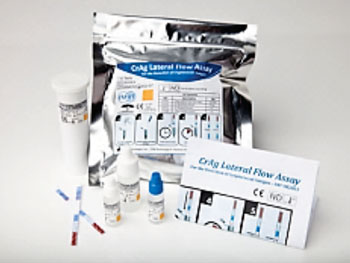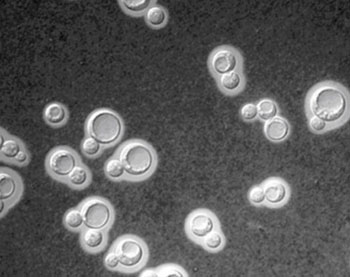Cryptococcal Disease Determined by Lateral Flow Assays
By LabMedica International staff writers
Posted on 27 Aug 2014
The detection of subclinical cryptococcal disease using antigen screening among human immunodeficiency virus (HIV)-positive individuals presents a potential opportunity for prevention of both clinical disease and death. Posted on 27 Aug 2014
Recently developed point-of-care cryptococcal antigen tests may be useful for screening, particularly in resource-limiting settings, so that patients with detectable cryptococcal antigen are identified and treated preemptively.
Scientists the Catholic University of Health and Allied Sciences (Mwanza, Tanzania) evaluate the utility of the point-of-care urine lateral flow assay (LFA) cryptococcal antigen test using two different diluents, compared to gold standard serum antigen testing, as a screening tool. Urine and serum of outpatients initiating antiretroviral therapy at two hospitals were tested for cryptococcal antigen.
The urine samples were screened for cryptococcal antigen using the CrAg LFA (Immuno-Mycologics Inc., Norman, OK, USA) in all patients using both a standard and a new test urine diluent. The LFA uses immunochromographic test strips that have been impregnated with monoclonal antibodies against capsular polysaccharide antigens common to fungi in the Cryptococcal species complex, including C. neoformans and C. gattii. The test strip is placed into the mixture and read after ten minutes at room temperature. The presence of two lines (test and control) on the test strip regardless of the intensity of the test line were interpreted as positive result, while the presence of a single control line was read as a negative result. The test takes about 10 minutes.
Among 140 patients screened, 10 (7.1%) had asymptomatic cryptococcal antigenemia with a positive serum cryptococcal antigen. Four of these 10 patients had cluster of differentiation 4 (CD4) counts between 100 and 200 cells/µL. The prevalence of cryptococcal antigen detected in urine using a standard (older) and a test (newer) diluent were 44 (31.4%) and 19 (13.6%). Compared to the new LFA diluent for urine cryptococcal antigen, the standard diluent had higher sensitivity, 100% versus 80%, but lower specificity, 74% versus 92%, using serum cryptococcal antigen as a gold standard.
The authors concluded that that HIV-positive outpatients with CD4 counts of less than 200, rather than 100 cells/µL, should be screened for asymptomatic cryptococcal antigenemia given its association with mortality if untreated. Agreement of the urine LFA with the serum LFA was not sufficient to recommend routine screening with urine LFA. The study was published on August 8, 2014, in the Journal of the International AIDS Society.
Related Links:
Catholic University of Health and Allied Sciences
Immuno-Mycologics Inc.
















